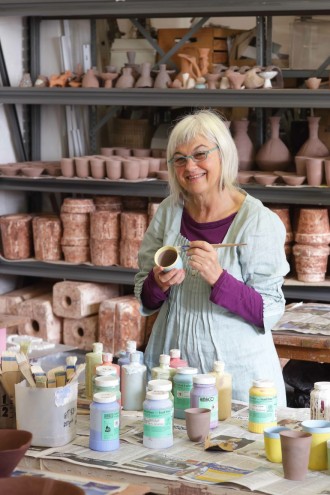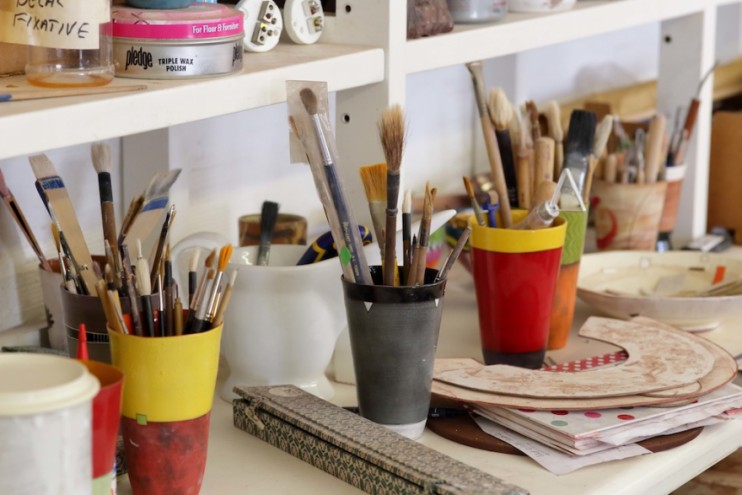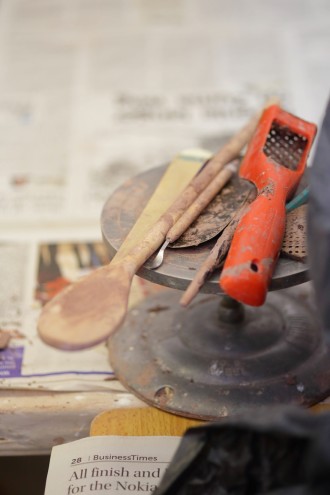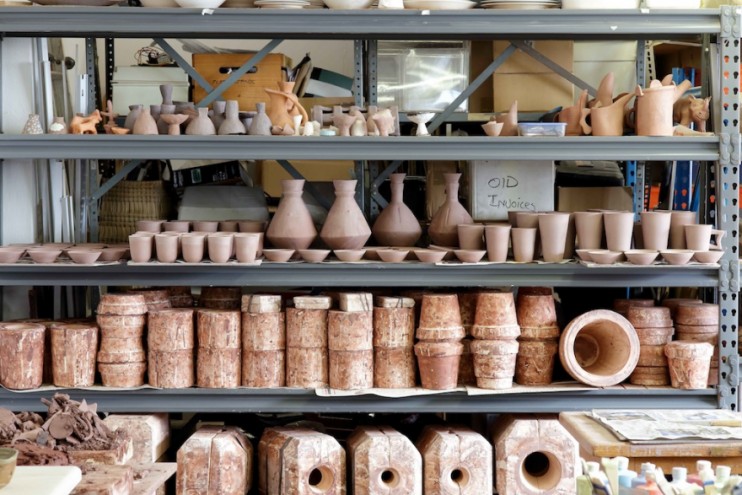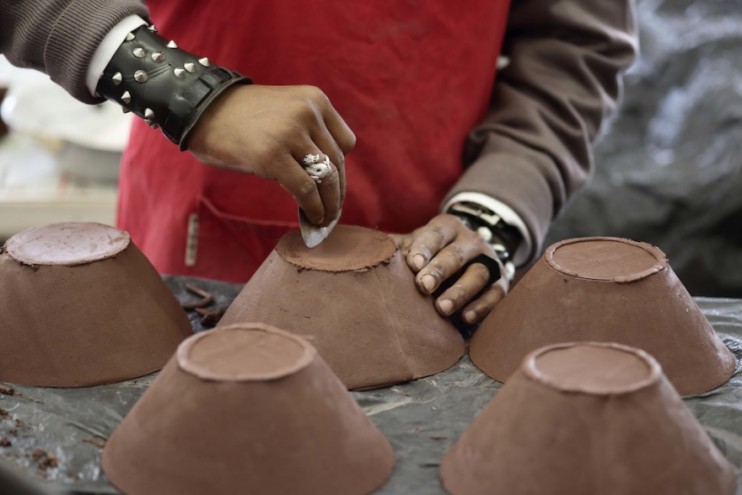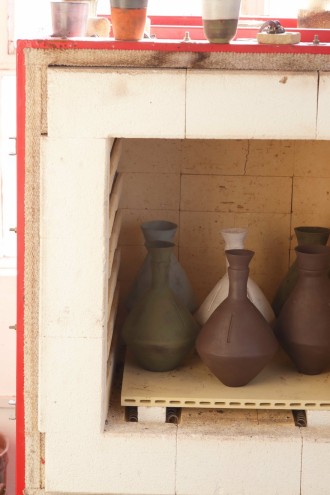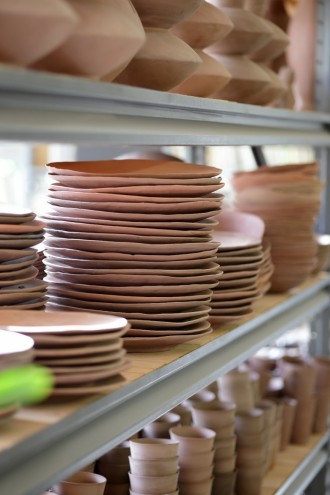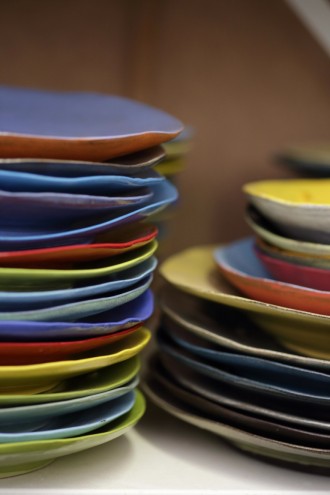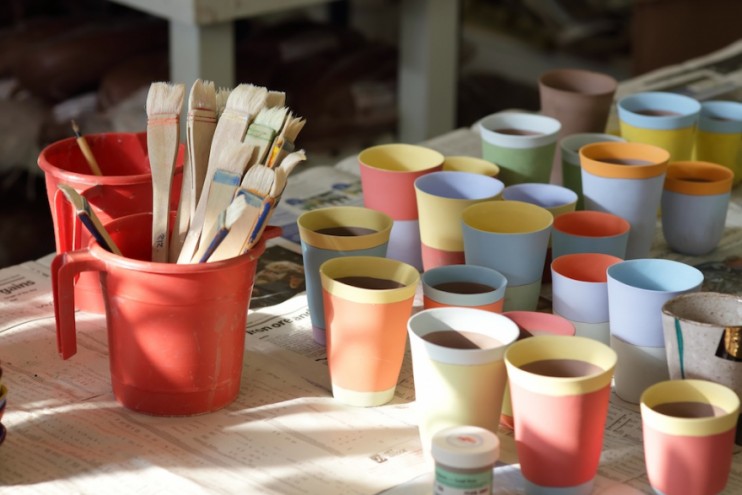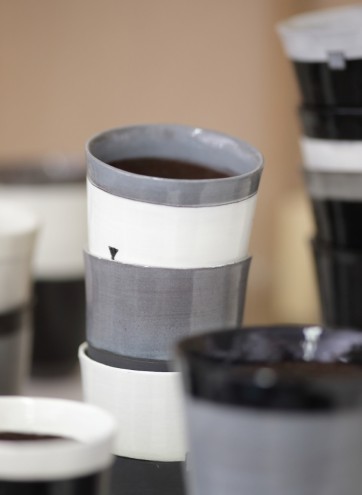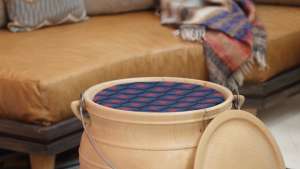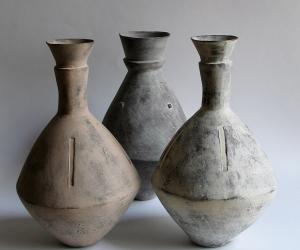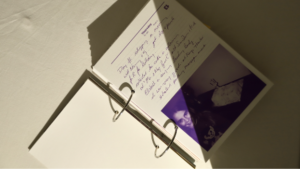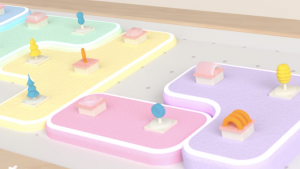From the Series
In a light, airy studio on the fifth floor of the Tollgate Industrial Centre in Woodstock, Cape Town, shelves are stacked high with ceramic wares in various stages of completion – from the clay-coloured, canvas-textured greenware waiting to be bisque-fired to the shiny finished pieces in a myriad of bright colours.
Enter the studio of Clementina van der Walt, who has been earning her living from making ceramics full time since 1988.
“I make things because I am looking for meaning,” says Van der Walt. “Why do we exist on the planet? What does it mean to be a human being? I guess my work is always a search for that. I haven’t found it yet...”
Working with clay, which incorporates the essential elements of earth, air, water and fire, is her way of relating to the world holistically.
"Today still, after all these years, I find it fascinating to make something out of a lump of clay that is transformed into something different in the oven and that lasts forever. Even if it breaks it can’t be molecularly changed again,” she says.
She sees her work as a continuation of an age-old tradition of making ceramics. A history-of-art graduate, she is driven by a fascination with what ceramics reveal about the lifestyles of different cultures and communities through the ages.
Ceramics from different cultures and across the centuries used the same process, connecting people through the ages - that is amazing to me. They say if you look at a ceramic piece, you get a sense of the ethos of a culture - their politics, economics and society.
What would today’s ceramics reveal about our culture? “If someone in the future had to find the ceramics of today, they would find millions of cheap Chinese things, which says something about our consumer society,” she muses.
Speaking about the impact of Chinese imports and how it has affected her own work, she says that although she finds the imports sterile, the quality is good and it appeals to a contemporary market.
“I used to sell a lot of tableware but now you get the very cheap imports from China and they are nice,” she says. “My challenge is to add value to what I do so that people will pay R300 for a mug as opposed to R10.”
“I am interested in things that are an antidote to severe industrialization. I try to make things by hand as much as possible; I want to see the mark of the hand that has made it. That is what is missing from the Chinese stuff – the people who made it; the human spirit. I deliberately try to emphasize this. I want people to be aware of an object when they use it; it has to communicate on some subconscious level.”
Her style has evolved over the past 35 years from being a very conscious search for a cultural identity in the 80s, which featured influences from West African textiles, urban visual language and township music, to a more emergent process with a “quieter aesthetic and more muted colours” influenced by the time she spends at her second home in the Karoo.
“A quite headspace is fairly important to me,” she says. “It is quite important as a creative person to think a lot. As soon as you start thinking, ideas start popping up – for me this often happens in the bath.”
She concedes that finding this quiet space is sometimes difficult in an age where we are bombarded by images and trends through the internet and platforms like Pinterest.
“Sometimes I think to myself I must stop looking at everything and I must just be with myself for a while and see what comes up. Because inevitably there is nothing original, images get recorded in your mind and it feeds into your work.”
She observes that more and more graphic designers, illustrators and even industrial designers are trying their hand at ceramics.
“A lot of the proliferation that you see in ceramics is from people who have a design background. They outsource the making of the ceramics to workshops or factories and then do surface design with transfers,” she explains. “Real handmade ceramics is not a skill you can fake. But working in the studio ceramics tradition, as I am, is no longer fashionable or viable as a career. It belongs to a long tradition of making and a philosophy of life, a worldview, which is not very trendy.”
Evidence of this is the closing down of many ceramics departments at tertiary institutions. “If I was still teaching today, I would encourage students to pursue a design education and do workshops to experience as many media as possible. Take Hella Jongerius for example: her ceramic work is very exciting but she doesn't make it herself.”
But for Van der Walt there is nothing that compares to the excitement of opening the kiln door: “There is always a surprise,” she marvels. “Sometimes something comes out so nicely and you try to replicate it, and it just doesn't come out like that again. There is a kind of magic that happens in the kiln.”

